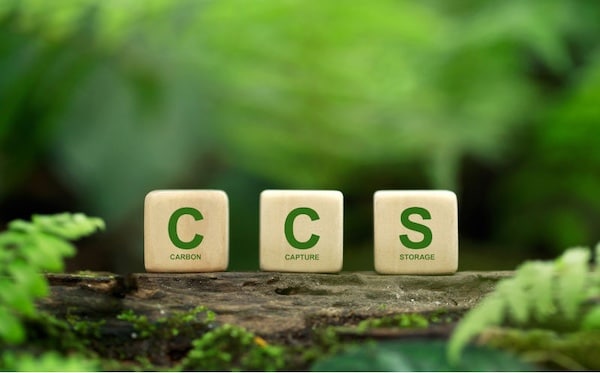It sounds wonderful. Politicians and fossil fuel companies love it. But more often than not carbon capture and storage (CCS) is raised as a smokescreen for something that will harm the world.
What do Anthony Albanese, Angus Taylor, David Littleproud, Barack Obama, West Virginia senator Joe Manchin and Joe Biden have in common? All are enthusiasts for carbon capture and storage and have advocated sloshing loads of public money into it.
CCS and the variant CCUS (carbon capture utilisation and storage) sound terrific. They let you go on burning coal and gas. Presto! The carbon dioxide that is causing climate change is hidden somewhere out of sight, forever.
This is the idea. Politicians love it. Fossil fuel companies love it even more.
The trouble is, it’s expensive and it doesn’t work very well.
There are several ways to separate carbon dioxide from fossil or “natural” gas or from gases going up a chimney. The best-known way is to “scrub” the gas through a water-based solution of amine (a chemical), which absorbs the CO₂. The solution is heated in another part of the plant to release the CO₂ and then cooled and cycled back.
It takes quite a lot of energy to run this process, and much more to compress the CO₂ to many times atmospheric pressure and pipe it to the place where it is injected underground.
CCS has been proposed as a magic solution in generating power from coal or gas, in cutting the emissions of natural gas production and in several industrial processes.
In the power sector, the CCS dream is well and truly over. Renewable power has come down in cost dramatically and is now cheaper than fossil-fuel power without CCS—so it is far cheaper than fossil power with CCS added on. The fate of CCS in power was sealed when two new American coal plants built to use it were scrapped: Kemper in Mississippi (converted to gas in 2017, shut in 2021) and Petra Nova in Texas (shut in 2021).
Most CCS projects are in the oil and gas sector. Many wells produce CO₂ as a byproduct. Traditionally, this was just “vented” to the atmosphere, driving more climate change. For several decades now, some companies have captured part of their CO₂ and injected it underground. The usual reason to do this is to push more oil and gas out of declining wells.
When oil and gas people talk about “capturing” and “sequestering” carbon dioxide, the CO₂ they refer to was underground and is being returned underground. What they really want is to increase their oil or gas output. This will eventually be burnt, releasing carbon dioxide to the air.
CCS can capture only part of the CO₂ in any project. The largest CCS project in the world happens to be in Australia, the Gorgon project run by major American oil company Chevron at Barrow Island in WA. The CCS unit there, finished in 2016, cost over $3 billion.
Chevron could not get it to work properly in its first years. It is now reported to be capturing around 40 percent of the CO₂ that Gorgon produces along with its natural gas.
A large part of the CO₂ produced in liquefied natural gas (LNG) projects comes from burning gas in the turbines that run the compressors. This is too dilute to capture and is just vented.
The Australian company Santos is proposing to develop the Barossa gas project in the Timor Sea. Barossa gas contains 18 percent carbon dioxide, an unusually high proportion. This one project is likely to add four million tonnes to Australia’s annual CO₂ emissions.
Santos says they may be able to eliminate part of their emissions using CSS, if they can find a suitable undersea reservoir.
All gas projects have a secret additional impact on the climate through leakage of the very potent greenhouse gas methane. Methane emissions are currently not measured in Australia but should be.
So beware when you hear politicians who waltz with fossil fuel executives talking about CCS. It sounds wonderful, but it may well be a smokescreen for something that will emit lots of CO₂ and methane and worsen the already dire outlook for climate change.
There may yet be useful applications for CCS in industrial processes where it is otherwise hard to cut carbon emissions, as has been pointed out several times by Greg Bourne, a climate and energy expert at the Climate Council.
Ralph Evans AO is author of “Toast: Climate change is doing enormous harm. Why do many Australians deny it? Can we avoid the worst effects?”. He is a former head of Austrade and co-founded the Australian arm of the Boston Consulting Group.

